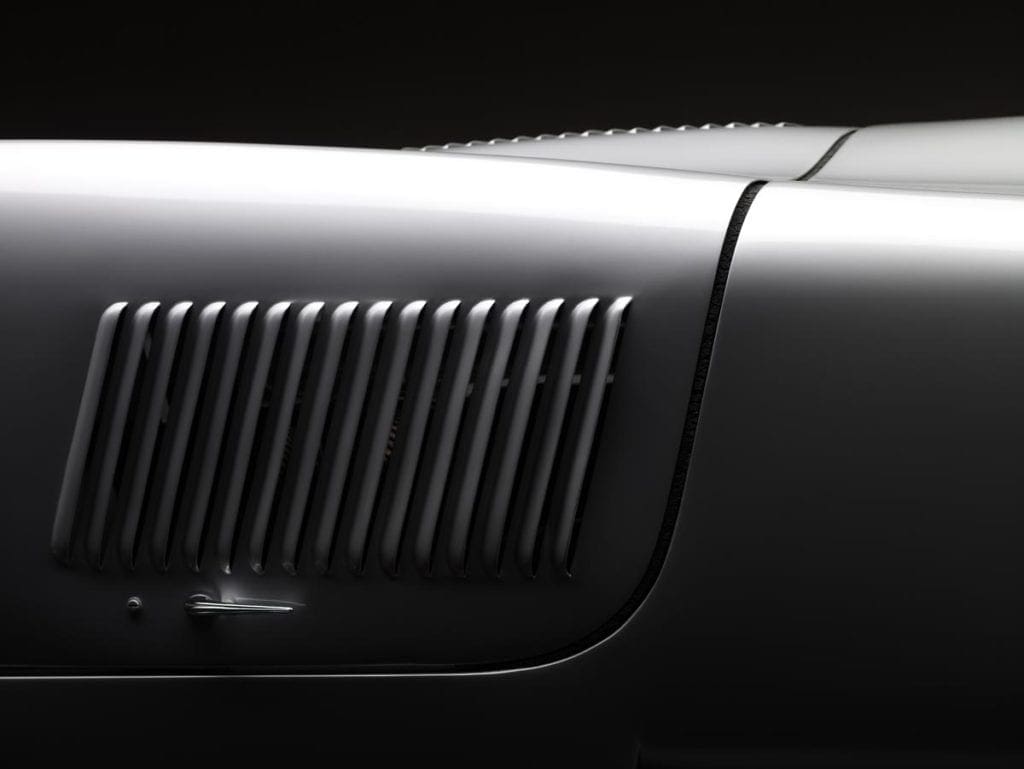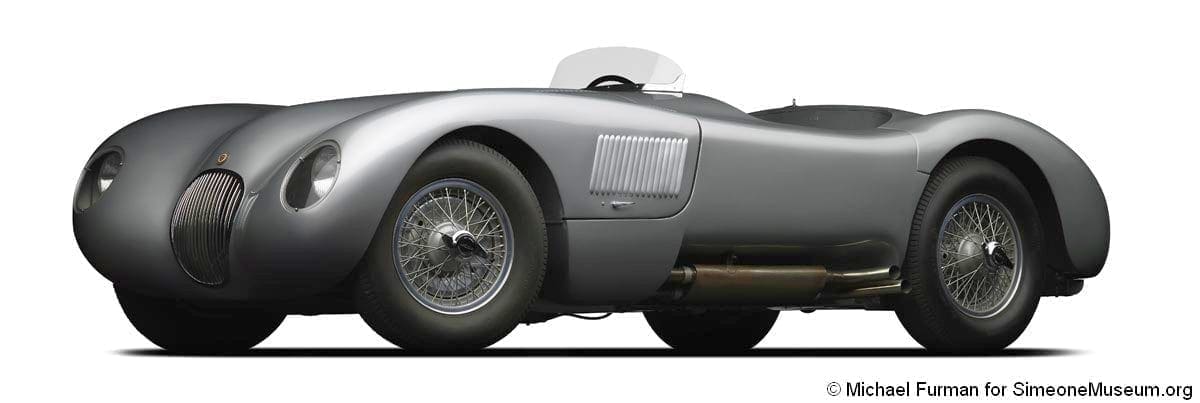Our car came in third in the 1953 Sebring 12 Hour race. It keeps the original body, engine, and chassis.
THESE CARS
After the war, Jaguar kept its reputation as an outstanding sports car. In Britain, however, the focus of the motor industry included a global outreach and satisfaction of the government’s export policy. President William Lyons and Manager Bill Heynes needed to increase production to make a desirable car for worldwide use. Nevertheless, still spurred by their sporting interests so successfully effected before the war, Jaguar unveiled the first XK120 model at the London Motor Show in 1948. The car was in great demand and soon entered large-scale production.
An encouraging finish in the 1950 Le Mans with the modified XK120 cars lead to the development in 1951 of the “C” type (competition), introduced one week before the 24 hour Le Mans race, after a development interval of only eight months. Designer Malcolm Sayer produced a beautiful aerodynamic body whose design has stood the test of time. The special aluminum car was powered by a modified XK 120 twin-cam straight-six engine but the horsepower was increased from the standard of 160 to 205 using dual carburetors and a variety of other enhancements. It was about 1000 pounds lighter than the passenger version.
Driven by Peter Walker and Peter Whitehead in the 1951 Le Mans one set a new average speed and distance record, leading the race for 16 of the 24 hours and in another C-type Stirling Moss set a record for the fastest lap. They did not compete in many other races but they won the 1951 Tourist Trophy race and the 1953 24-hour race at Le Mans.
After a failure in 1952, a C-type again won the 1953 Le Mans race after some improvements such as the installation of triple Weber carburetors, high lift cams and the first use of disc brakes. In fact, the C-type was the first car to race with disc brakes. For the first time in Le Mans
OUR CAR
This car was imported in 1952 by Midwest Jaguar dealer Art Feuerbacher. It ran in a series of smaller races but its greatest performance was in the 1953 Sebring where it came in 3rd overall driven by Sherwood Johnston who that year won the drivers’ championship. It had a brief racing history thereafter until 1959 when purchased by Ohioan Art Seyler. He rebuilt the original engine, and later raced it between 1961 and 1965 in regional SCCA events bragging he had 30 straight finishes before they forced him to retire because of a broken axle. He raced it at Mid-Ohio against Ken Miles in a Cobra, Jim Hall in a Chaparral, all with the same engine. He drove to the VSCCA race at Watkins Glen in 1975, raced, and drove back (one of his favorite practices).
In 1976 he installed an E-Type engine and preserved the original C-type engine, still in excellent condition. He continued to take part in VSCCA races. Although he made modifications, such as installation of a fuel cell, he kept all the original equipment. He finished his career in an SVRA race at Watkins Glen in 1986.
When we purchased the car from Art, it was towed down by Bill Wonder who always had a great eye for “wonderful” cars and to this day remains extraordinarily alert and active. We installed the original engine and had the original gas filled shock absorbers recommissioned and installed. They also put the gas tank back in place. Fortunately, Art had kept these things nicely preserved. We removed his roll bar. With all the bits together Ralph Buckley and Kevin Kelly did a complete restoration. Harry Tidmarsh did a beautiful job in restoring the body.
So few of these C-types had an original body I asked him to remove as little of the material as possible and to save whatever he trimmed off. For instance, the thin aluminum around the headlight shells and grille had torn through at the screw holes necessitating its replacement; similarly the rear wheel arches needed restoration. We completed this work over a long period but painstakingly so that the result was a perfect restoration. We painted it the original Jaguar silver and reupholstered in black as factory records show.
We have enjoyed her since. As is typical of Ralph Buckley restorations, it has performed flawlessly. A remarkable car, different from the D-type to drive, but charming in its own manner and one can readily reckon why it was so successful during the early 1950s.

I was just in awe of the C-Type when I first stepped into it. When I look back on it now, it makes me smile. The steering was light – almost scary light. It was the first car I ever drove that had a really precise feel about it – it really felt like a racing car.
Phil Hill













